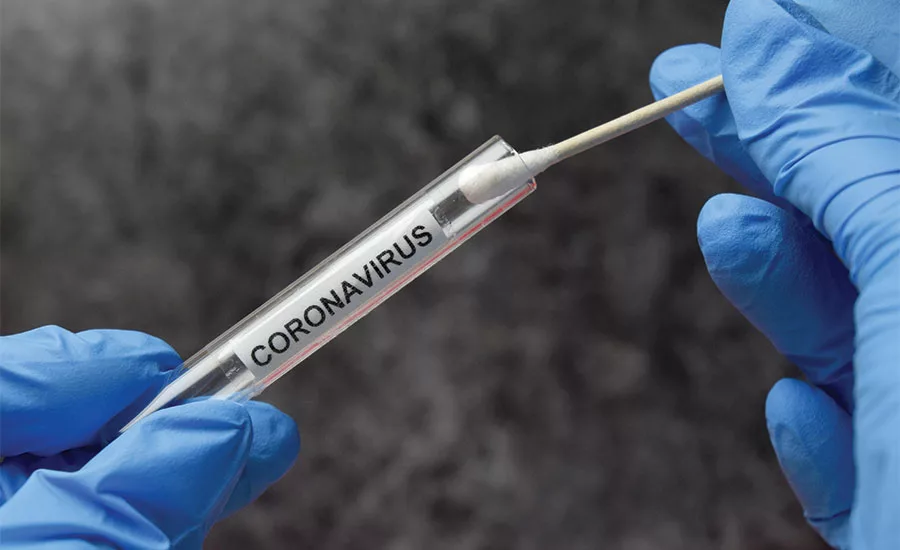Guarding Against Covid-19 on the Drilling Jobsite
Masks Aren't New in PPE Kit, but More Vital than Ever

Covid-19 tests, we’ve heard, can be uncomfortable. Masks can reduce the chances you or your loved ones need to go through that.
Personal protective equipment (PPE) cuts the risk from hazards common and uncommon. PPE for drillers might include hard hats, ear plugs, eye protection, steel-toed boots, heavy gloves, maybe safety apparel for folks working near traffic. Let’s talk hard hats.
Many types of drilling have overhead hazards. You move pipe this way and that. You winch up, add to the string and do it again. Heavy steel objects move in or around a driller or helper’s shoulder and head areas. Hard hats reduce the risk of hits to the head, potentially preventing injury or lessening injury if it happens. Yet, several times in my nearly 8 years running National Driller, I’ve heard drillers talk about how they prefer not to wear them.
Maybe they work in remote areas. “I’ve literally never seen an OSHA inspector out here,” they say. Others have told me hard hats actually increase risk by inhibiting situational awareness. “I can’t see anything with all that gear on,” people have told me. Let me ask: If you actually see a hazard coming, do you always have the fraction of the second you might need to get your head out of the way? If you don’t see that casing coming at your head, wouldn’t you rather have a hard hat just in case?
Hard hats can potentially mean the difference between coming back to work and providing for your family, or having your family feed you because you can’t do it for yourself anymore. Yet, their use across the various drilling industries falls short of 100 percent.
Which brings me to the latest PPE debate: masks. Drillers aren’t new to masks. They’ve worn them for decades at the side of the mud mixer to keep from inhaling all those tiny particulates, among other tasks. But they have a new reason to use them, and use them all the time: the coronavirus pandemic.
We talk about masks in episode 8 of our video and podcast series Drilling In-Site. (Find that conversation at www.thedriller.com/insite and a boiled-down version in this month’s cover feature.) Like that casing you didn’t see coming, masks reduce risk from something you don’t see. You don’t know if the customer or your helper has Covid-19. After someone catches it, they can carry it for days after without showing symptoms. You don’t necessarily know if you have it, until you get a fever or lose your sense of smell or taste. Think for a minute about how many people you directly interacted with over the last 10 days. Masks — if everyone, driller or not, wears them — cut your risk and theirs.
I, for one, mask up when I’m out. Beyond trying to keep my family safe, I have an aversion to cotton swabs stuck up that far up my nose. Have you seen a Covid-19 test administered?
Episode 8 covers more than masks, of course. We also explore general safety best practices during the pandemic, like sanitizers and social distancing. If you listen in, we’d be interested to hear your input. Does your company require masks on the jobsite now? How has adherence to mask policy changed as the pandemic drags on? What safety protocols have helped put you at ease as you field crews? Are you skeptical of the value of mask use? Let us know. Send an email to verduscoj@bnpmedia.com.
Stay safe out there, drillers.
Step Up to the Mic
Working on an interesting project or have industry wisdom to share? Email verduscoj@bnpmedia.com to be considered for a guest spot on Drilling In-Site.
Looking for a reprint of this article?
From high-res PDFs to custom plaques, order your copy today!




